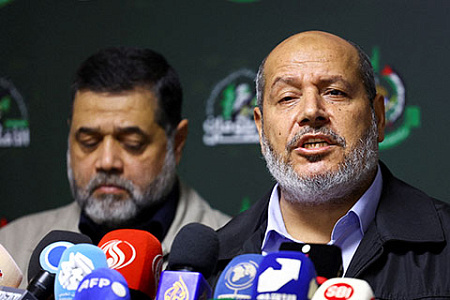
In a high-stakes diplomatic push aimed at de-escalating the protracted conflict in the Gaza Strip, delegations from Israel and Hamas have arrived in Cairo for indirect negotiations on a potential ceasefire. Joining these critical discussions are representatives from influential mediators Qatar and the United States, signaling a multilateral effort to broker a fragile peace. The atmosphere is charged with cautious optimism, as reports suggest the parties are nearing an agreement, though its ultimate success hinges on meticulous on-the-ground implementation.
Egypt’s capital has once again become the nexus for shuttle diplomacy, hosting the pivotal talks. At the heart of the agenda lies the comprehensive plan proposed by President Donald Trump, which seeks not only a resolution to the dire situation in Gaza but also the urgent release of Israeli hostages believed to be alive and the repatriation of the remains of those deceased since the October 7, 2023, attacks. The Egyptian Foreign Ministry has voiced strong hopes that these consultations will finally bring an end to the war in Gaza and alleviate the immense suffering endured by the Palestinian people, recognizing these negotiations as a crucial advancement of the diplomatic momentum generated by Trump’s recent initiative.
Speaking on the eve of the talks, Israeli Prime Minister Benjamin Netanyahu confirmed dispatching a negotiating team, led by Strategic Planning Minister Ron Dermer, to Cairo “to finalize the technical details for the release of our hostages.” Netanyahu underscored the urgency, stating, “We and our American friends intend to limit these negotiations to a few days,” and warned that the international community would no longer tolerate delays from the Hamas group. Looking beyond an immediate ceasefire, the Israeli premier reiterated a firm commitment to disarming Hamas and demilitarizing the Gaza Strip, asserting this objective would be achieved either diplomatically, via the Trump plan, or through continued military action.
Leading the Hamas delegation in Cairo is Khalil al-Hayya, a prominent figure within the group who had previously been targeted by Israeli forces. His recent video appearance on October 5 marked the first confirmation of his survival following an Israeli airstrike in Qatar just weeks prior. Sources from the Israeli newspaper *Yedioth Ahronoth* indicated that the Hamas delegation was slated to meet with US representatives on October 6. Discussions are reportedly centered on the mechanisms for hostage release, prioritizing those currently alive, and Hamas’s demand for the withdrawal of Israeli troops from specific areas within the Gaza Strip.
Furthermore, Hamas is pushing for the release of 250 high-profile Palestinians imprisoned by Israel, including Marwan al-Barghouti, a widely recognized Fatah leader. An unnamed Hamas source conveyed to *Yedioth Ahronoth* that if Israel approves a list of “veteran” Hamas functionaries held in Israeli custody, it could pave the way for Barghouti’s freedom, acknowledging this point is likely to spark intense debate over Israel’s prerogative in selecting detainees for release. Critically, the contentious issue of post-war control over the Gaza Strip is not expected to be addressed during this initial phase of negotiations.
Hamas has also specifically demanded a halt to the latest phase of Israel’s “Chariots of Gideon” operation, which involves an intensive assault on the densely populated Gaza City. According to their conditions, Israel must cease all military operations across Gaza, and its forces must withdraw entirely from the city. The proposed hostage exchange would occur gradually over several days, facilitated through the International Committee of the Red Cross, a mechanism previously utilized. Reports have previously suggested technical challenges faced by Hamas in transferring all abducted individuals.
In a development that could signal goodwill or strategic positioning, the Israel Defense Forces (IDF) had reportedly reduced the intensity of its combat operations by October 5, transitioning to a more defensive posture. This shift, reported by *Axios*, was enacted by the IDF General Staff following directives from Israel’s political leadership. President Trump himself confirmed the troop movement via social media on October 5, stating, “After negotiations, Israel agreed to an initial withdrawal line… When Hamas confirms it, the ceasefire will take effect immediately, followed by the exchange of hostages and prisoners.” He added that this would create conditions for the “next stage of withdrawal.”
In an interview with CNN, President Trump issued a stark warning, stating that Hamas faces “total destruction” if the radical group refuses to relinquish political and military control over the Gaza Strip in any post-conflict arrangement. The American leader concluded by expressing his anticipation for swift clarity on whether Hamas is genuinely committed to a peaceful resolution, underscoring the precarious balance of the current diplomatic offensive.
